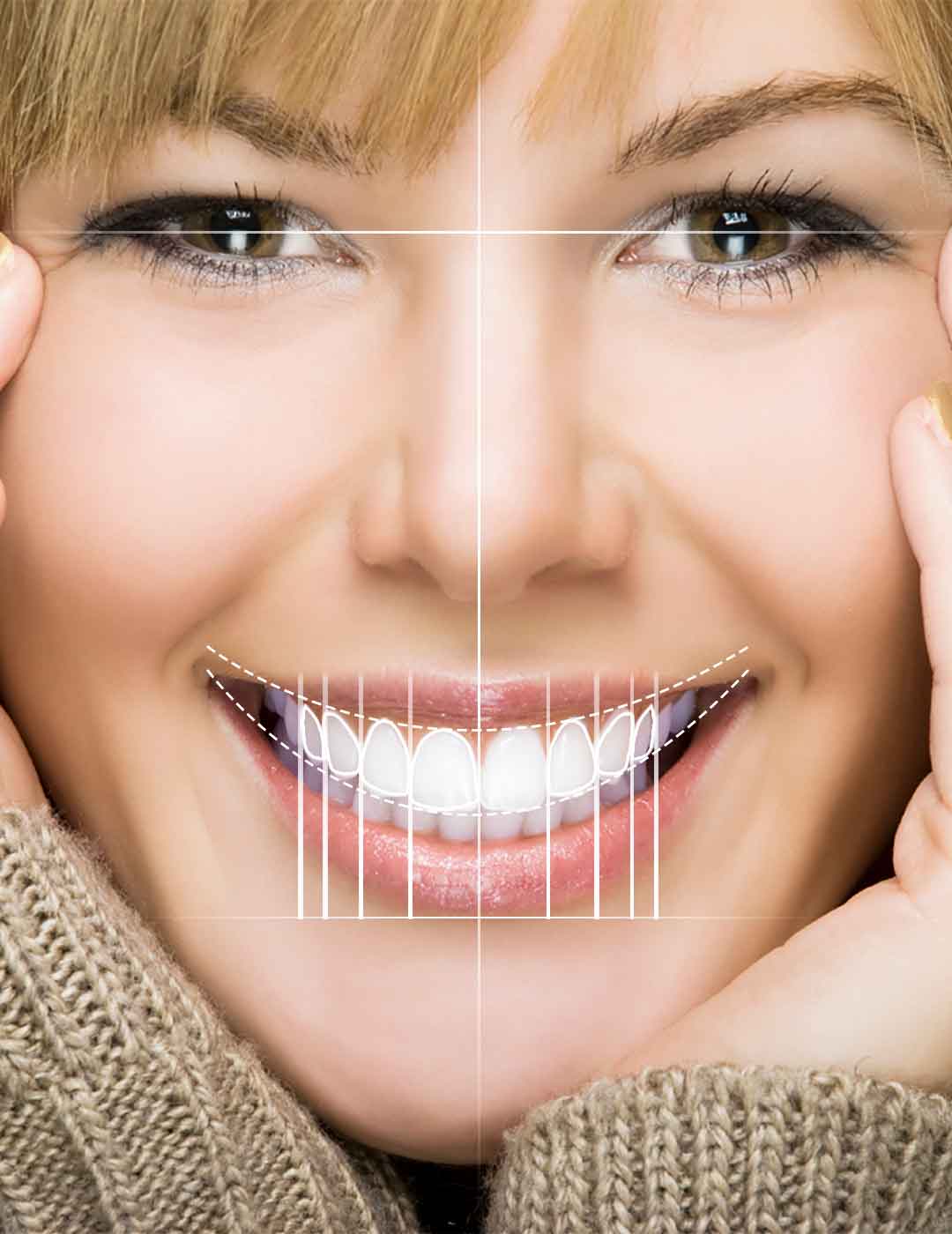In the world of cosmetic dentistry, advancements in technology have revolutionized the way dental professionals approach smile makeovers. One of the most exciting innovations is Digital Smile Design (DSD), a cutting-edge tool that uses digital technology to help create the perfect smile. This modern approach allows dentists to design a smile that not only enhances your appearance but also ensures it is functional and tailored to your facial features. In this blog, we will explore how digital smile design is transforming the world of cosmetic dentistry and creating beautiful, customized smiles.
What is Digital Smile Design?
Digital Smile Design (DSD) is an advanced system that combines digital imaging, facial analysis, and 3D technology to create a personalised treatment plan for patients seeking a smile makeover. By analysing a patient’s facial structure, dental features, and personal preferences, digital smile design allows dentists to digitally plan and visualise the final result before any treatment begins. This technology enables a highly precise, predictable, and customized approach to cosmetic dentistry, offering patients the chance to see a simulation of their smile transformation.
How Does Digital Smile Design Work?
The process of digital smile design involves several steps that combine advanced technology with the dentist’s expertise to create a detailed and accurate treatment plan:
- Digital Imaging
The first step in DSD is capturing high-quality digital images of the patient’s face and teeth. This includes taking photographs of the patient’s smile from multiple angles and using dental imaging to create 3D representations of the teeth. These images serve as the foundation for the design process. - Facial Analysis
Using digital technology, the dentist will analyse the patient’s facial features to ensure the smile design complements their natural appearance. This includes measuring facial symmetry, lip line, and the proportions of the teeth in relation to the face. A well-designed smile should enhance a person’s overall aesthetic, balancing harmony between the teeth, lips, and facial structure. - Smile Simulation
Once the digital images and facial analysis are complete, the dentist can create a digital simulation of the proposed smile. This simulation shows how the patient’s smile will look after treatment, taking into account the patient’s unique facial features and preferences. The patient can visualise the results before committing to the procedure, ensuring they are happy with the outcome. - Treatment Planning
After the patient approves the digital simulation, the dentist creates a tailored treatment plan based on the simulation. This plan outlines the necessary steps, whether it’s teeth whitening, veneers, crowns, or orthodontic treatment, to achieve the desired results. The DSD system allows for precise adjustments to be made, ensuring the final smile is both beautiful and functional. - Implementation
With the treatment plan in place, the dentist proceeds with the necessary cosmetic procedures. The precision of digital smile design ensures that each step of the treatment is meticulously executed, resulting in a highly predictable outcome.
The Benefits of Digital Smile Design
- Personalised Treatment
One of the most significant advantages of digital smile design is that it allows for a fully personalised treatment. Unlike traditional methods, which rely on guesswork or static impressions, DSD creates a smile that is tailored to fit the patient’s unique facial structure and personal preferences. - Enhanced Precision and Predictability
By using dental imaging and digital tools, DSD offers a level of precision that was previously unattainable. Patients can see a visual representation of their smile before any treatments are carried out, which increases the likelihood of achieving the desired result. - Minimally Invasive
In some cases, digital smile design can help reduce the need for invasive procedures. By analysing the patient’s natural smile and facial proportions, the dentist can make less invasive adjustments, such as tooth contouring or bonding, to enhance the smile without requiring extensive treatments. - Quicker Treatment Time
The digital nature of DSD allows for faster and more efficient treatment planning. With precise simulations and treatment planning, the process of achieving the perfect smile is streamlined, saving time for both the patient and the dentist. - Improved Patient Satisfaction
One of the key benefits of digital smile design is the ability for patients to visualise the results beforehand. This significantly improves patient satisfaction, as they can approve the final design before undergoing any treatments. It also reduces the likelihood of disappointments, as patients have a clear understanding of the results.
Digital Smile Design in Cosmetic Dentistry
Cosmetic dentistry is all about improving the appearance of your teeth and smile, and digital smile design is a game-changer in this field. Some of the cosmetic procedures that can be enhanced by DSD include:
- Veneers: Thin, custom-made shells that cover the front surface of the teeth. DSD ensures that the veneers are the perfect size, shape, and colour to suit the patient’s face.
- Crowns: DSD helps to design crowns that blend seamlessly with the natural teeth, providing both aesthetic and functional benefits.
- Teeth Whitening: While DSD is often used for more complex treatments, it can also assist in planning teeth whitening procedures to ensure the final result complements the patient’s facial features.
- Dental Implants: DSD can aid in designing dental implants that match the patient’s natural teeth, enhancing both appearance and functionality.
The Role of Dental Imaging in Smile Design
Dental imaging plays a crucial role in digital smile design. By using high-resolution digital scans, 3D imaging, and photographs, dentists can create highly detailed and accurate models of the patient’s teeth and gums. These digital models allow the dentist to simulate different treatment options and predict the outcomes with remarkable accuracy.
Moreover, dental imaging allows for better communication between the dentist and the patient. Instead of relying on verbal descriptions or traditional molds, patients can see exactly how their smile will look after treatment. This visual feedback is essential for ensuring that the final result meets their expectations.
Is Digital Smile Design Right for You?
If you’re considering a smile makeover, digital smile design offers numerous benefits that can help you achieve the smile you’ve always wanted. Whether you’re interested in veneers, whitening, or a complete smile transformation, DSD provides an accurate, personalised, and minimally invasive approach to cosmetic dentistry.
To determine if digital smile design is right for you, consult with a dentist who specialises in cosmetic dentistry and offers DSD services. They will assess your oral health, facial features, and goals, helping you decide on the best course of action.
Digital smile design is reshaping the future of cosmetic dentistry, offering patients an opportunity to visualise and personalise their smile transformation. By combining dental imaging with advanced technology, dentists can create smiles that not only enhance aesthetics but also improve function and overall oral health. If you’re looking to achieve the perfect smile, digital smile design is an innovative and reliable solution.





